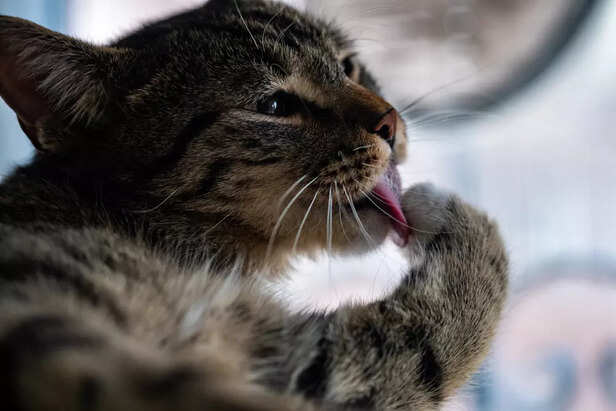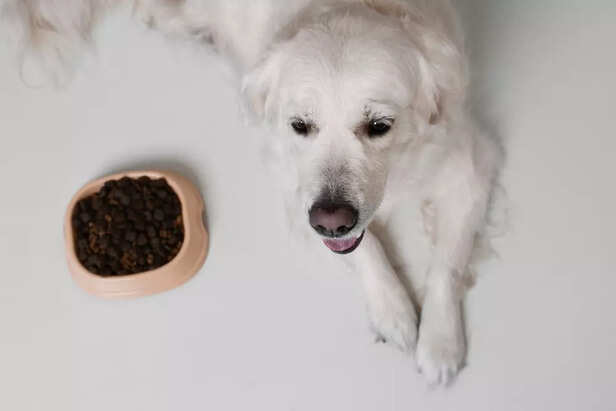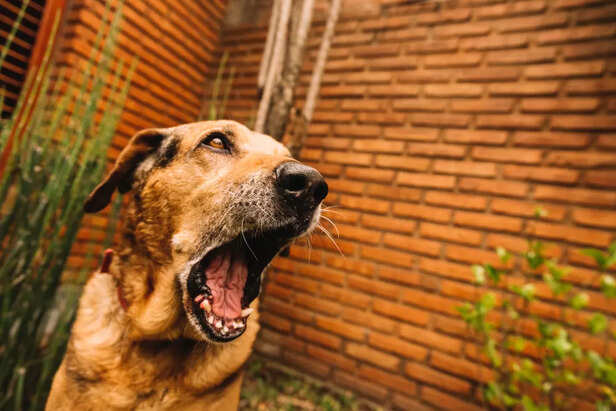Signs of Unease

Restless Moves
( Image credit : Freepik )
One of the clearest signals of anxiety in pets is unusual restlessness. If your dog keeps pacing back and forth or your cat cannot seem to settle in their favorite spot, it is not just random fidgeting. This could be their way of saying, “Something is making me uneasy.” Watch for repeated movements like circling, excessive licking, or constant tail flicking. These are not quirky habits; they are your pet’s version of tapping their foot nervously. Restlessness often shows up when a pet hears loud noises, sees unfamiliar faces, or even when their routine is disrupted. If you notice this behavior often, it is worth asking yourself what could be triggering it.
Food and Feelings

Meal Shifts
( Image credit : Freepik )
Food is usually a pet’s happy place. Dogs wag their tails for treats and cats come running at the sound of a can opening. But anxiety can flip this joy upside down. Some pets completely lose interest in eating, while others start overeating as a coping mechanism. Both extremes are worth noticing. A sudden lack of appetite could mean that your pet is overwhelmed or scared, while unusual food obsession might indicate stress-driven behavior. Pay attention to when these shifts happen. Does your pet avoid food after a trip to the vet or during thunderstorms? These patterns can be powerful clues that stress is the hidden culprit.
Sounds of Stress

Vocal Clues
( Image credit : Freepik )
Every pet has its own communication style, but sudden changes in vocalization can point to anxiety. A normally quiet dog that starts whining or barking excessively may be trying to tell you that something feels wrong. Similarly, a cat who suddenly meows more than usual or lets out low growls could be sending stress signals. It is not about silencing them but about listening closely. Think of it as your pet using their voice to ask for comfort or reassurance. These vocal cues often pop up when pets feel alone, frightened, or uncertain about their surroundings. Recognizing them can help you respond with empathy instead of frustration.
Hidden Anxiety Signs

Behavior Shift
( Image credit : Freepik )
One of the trickiest signs of pet anxiety is behavior that feels completely out of character. A sweet-natured dog might suddenly growl when approached, or a playful cat may start hiding under the bed for hours. This shift can be confusing, but it often points to underlying stress. Pets, just like people, can either lash out or shut down when overwhelmed. The key is to see aggression or withdrawal not as bad behavior but as communication. They are showing you that they feel unsafe or unsettled. Offering gentle reassurance, safe spaces, and consistent routines can make a huge difference in calming their fears.
Be Your Pet’s Safe Haven

Safe Space
( Image credit : Freepik )
Anxiety in pets is real, and the early signs are often easy to miss if you are not paying attention. Restlessness, appetite changes, unusual vocalization, and sudden behavior shifts are all red flags that deserve your notice. The good news is, by spotting these signals early, you can step in before anxiety becomes overwhelming. Your pet looks to you for safety, love, and reassurance. By learning their silent language, you are not just a pet owner; you become their safe haven in a noisy and uncertain world. And that bond of trust is one of the most rewarding parts of sharing your life with a furry companion.
Celebrate the bond with your pets, explore
Health & Nutrition, discover
Breeds, master
Training Tips,
decode Behavior, and set out on exciting
Travel Tails with
Times Pets!Frequently Asked Questions (FAQs)- What are the first signs of anxiety in pets?
Restlessness, excessive licking, appetite changes, and unusual vocalization are early signals. - How can I calm my anxious dog naturally?
How can I calm my anxious dog naturally? - Do cats show stress differently than dogs?
Yes, cats often hide, avoid food, or groom excessively instead of being vocal like dogs. - When should I see a vet for pet anxiety?
If anxiety signs persist, worsen, or affect eating, sleeping, or daily activities, consult a vet. - Can pet anxiety be cured completely?
Not always, but with training, consistency, and sometimes medication, it can be well managed.





